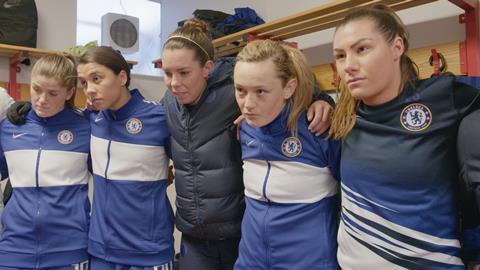However, social channels have grown in viewership and engagement

Women’s sport has experienced its first drop in broadcast audiences since 2021, according to the Women’s Sport Trust’s latest Visibility Report.
Three-minute reach in the UK from January until May dropped from 22.6 million in 2024 to 19.6 million in 2025. This coincides with a 15% reduction in coverage hours from just over 3,000 hours to a little more than 2,500 hours, and falls in the WSL and women’s Six Nations audiences, and comes after three years of growth for the first six months of the year that took viewership from 9.1 million in 2021 to where it is now.
The women’s Boat Race is the most-watched women’s sport event of 2025 to date, with 2.18 million viewers. The rest of the top ten was made up of football and rugby, particularly national teams - which bodes well for the upcoming women’s Euros and women’s Rugby World Cup this summer and following increase in WSL fixtures shown on Sky Sports.
Meanwhile, women’s sport federations have seen a growth in reach across social channels, with the WTA increasing its YouTube views by 75% to 63 million. Elsewhere, the WNBA grew its TikTok viewership by 8% to 131 million, and the UWCL had the most Facebook engagements, with 6.6 million, a 92% growth on 2024. The Women’s Indian Premier League topped the charts for Instagram with 28 million engagements, but this was actually a 28% fall on 2024 - when well-known Indian cricket Smriti Mandhana’s RCB Bangalore side won the competition.
In the UK, the WSL was the standout performer, with 56 million TikTok views (23% growth), 20 million views on its recently launched YouTube channel, and six million Instagram engagements (35% growth). There is a fairly large drop off to the next largest UK competitions, with the Women’s FA Cup drawing 20 million, 5.3 million, and 1.6 million views and engagements respectively, and then the Netball Super League attracting 4.5 million, 43,000, and 296,000.
“It’s hugely encouraging to see women’s sport thriving on digital platforms, with athletes, teams, and leagues leveraging new ways to connect with fans. This ecosystem (built through collaboration between broadcasters, rights holders, and platforms) is vital to continuing the sport’s growth.” said Tammy Parlour, CEO of the Women’s Sport Trust.
“That said, the decline in overall broadcast viewership is a reminder of the fierce competition for audience attention. We must ensure that investment in production and distribution keeps pace with fan demand and the quality of the sport on offer.
“There is still untapped potential – particularly if we can close the gap in resources between men’s and women’s sport. The growing digital interest shows there’s strong casual fandom; the opportunity now is to translate that into regular, domestic viewing habits, especially off the back of the interest that this summer’s major events will generate. To unlock long-term value, we need consistent, quality coverage – supported by sustained investment across the whole ecosystem.”
You can find the full report here.





No comments yet